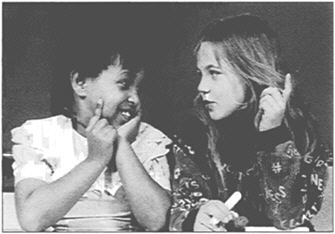|
Goals for School Mathematics The 1989 NCTM report Curriculum and Evaluation Standards for School Mathematics identifies five broad goals for students' study of mathematics:
|
Measuring What's Worth Learning

The spotlight of educational reform continues to sweep across the stage of mathematics. First curriculum, then teaching, and now assessment have come under intense professional and public scrutiny. Amid deteriorating public confidence in the quality of American education, the mathematical community is addressing multiple challenges to articulate and implement effective standards in the key arena of testing, assessment, and accountability.
In the center of the assessment stage are three elements contesting for leadership. Conventional testing offers comfortable short-response tests on traditional content that are taken by millions of students every year. Reformers, including authors of the two K-12 Standards documents from the National Council of Teachers of Mathematics (NCTM), call for fundamental change — different in content, in format, and particularly in spirit. To this well-rehearsed contest of traditionalist vs. reformist has now been added a third movement arriving from outside the educational community: the political call for assessment of progress towards our nation's new standards in mathematics education.
In the decade since publication of A Nation at Risk, the United States has moved a long way toward a new consensus for education. Talk of national standards, once taboo, is now commonplace; so too is talk of alternative school structures



